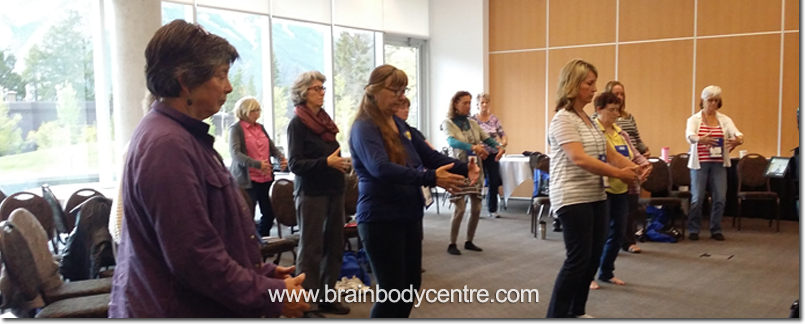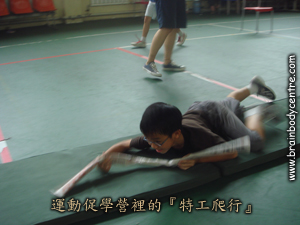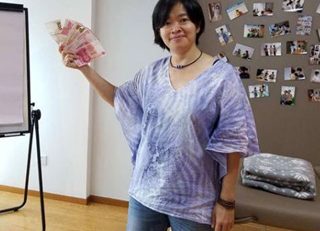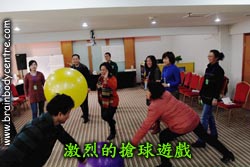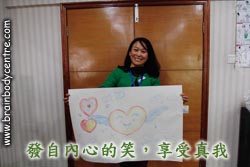Presentation on “An Introduction to the Lung Meridian Balance”
Conrad Ho, Oct. 26, 2015, Banff, Canada
On 25 September 2015 (Canadian time) at the international Kinesiology conference at the Banff Centre in Banff, Canada, Conrad Ho presented his insights originated from his casework experiences and gained from reading scientific reports and books, which formed the basis of his design of his meridian balances. Using the group balance of the lung meridian balance, Conrad would like the audience to experience the procedures involved.
Many people from all over the world, even some of the Chinese themselves, are suspicious of the objective existence of meridians. However, since 1990s in the Chinese as well as the Western scientific communities, every now and then, researchers found probable candidates for the physical substance of meridians deserving in-depth exploration. Before 1990, a research team in Tianjin found that a needle into an acupuncture point would lead to a surge of calcium ions, suggesting that there had to be something capable of suddenly releasing large amounts of ions in the vicinity of acupuncture points. This source was probably some soft tissue, rather than a piece of bone.
Professor Bei Lun of Fudan University followed this clue and recruited some physicians and patients for an experiment. A needle was sent into some acupuncture points on the legs of the subjects until the physician had the sensation of Qi from the needle. Then, the researchers observed the exact locations of the needles through a magnetic resonance imaging machine. They concluded that the needles were down at the interosseous membrane between the fibula and tibia, which is a connective tissue. They analyzed samples of the interosseous membrane using a proton accelerator. For those samples from an acupuncture point against those from other areas, their respective levels of calcium (Ca), phosphor (P), potassium (K), iron (Fe), zinc (Zn), manganese (Mn) and chromium (Cr ) differed significantly, from 40 to 200 times. This might be the first time in history that some physical evidence was found on the existence of meridians. How exciting!
Professor Bei Lun’s team proceeded to carefully review the micro-structure of the interosseous membrane. It was found that collagenous fibers were knitted together to form sheets of such membrane. Collagenous fibers at the molecular level displayed the qualities of bio-liquid crystals composed of several different types of protein molecules. According to the research on the distant healing process of qigong masters conducted by Shanghai Jiaotong University in the past, it was discovered that they were largely sending out far infra-red rays. Therefore, the research team directed the far infra-red rays to collagenous fiber bundles on their sides, and the far infra-red rays basically could not pass through. When it was shone on the cross section, the rays went right through. The transparency rate was close to 100%. The collagenous fiber was actually bio-optical fibers! It was likely that they were the body’s expressways for information transmission. This was in line with the traditional Chinese medicine’s theory that the meridians distribute energy and disseminate information.
In the book “The Fascia System of Human Body – A new interpretation of Jing Luo” published by Westland Press in 2007, the authors, namely He Zhenquan, Chen Yaojian and Yuan Lin, listed the scientific evidences collected from scanning technology. They proposed that the physical substance of the meridian system was the fascia system. It followed that the flow of bioelectricity network on the skin was, in fact, a phenomenon projected from the fascial system in a certain way, rather than the meridians thenselves.
Of course, we can also infer that the meridian system is, at the same time, composed of the superficial bioelectricity network and the deeper fascia system. This theory has inspired Conrad Ho to design some of the techniques and games used in his meridian balances. Those used on the skin had the intention of enhancing meridian awareness; those on the fascia system, relaxing the deeper connective tissues along the meridians. These techniques have been taught for several years in Mainland China, bringing benefits to students at different levels.
On the presentation day, Conrad Ho applied these techniques to people from different countries, and they responded favorably. After finishing the lung meridian balance, some participants reported that they felt warmth arising from deep in their bodies. One said her lower torso was originally quite numb but felt something cleared after the balance. One felt his chest having opened up more, as opposed to the feeling of being filled up before. Others perceived a tingling sensation in their arms along the lung meridian. Someone who was having a cold with inflammation in the air ducts several days before and was short of breath at the start of my presentation, was breathing more comfortably in the middle of the presentation and completely at ease toward the end. He felt refreshed…….
This is one of the many factors which makes Kinesiology appealing. You can witness the results instantly and obtain the psychological reward that prompt you to move on.

